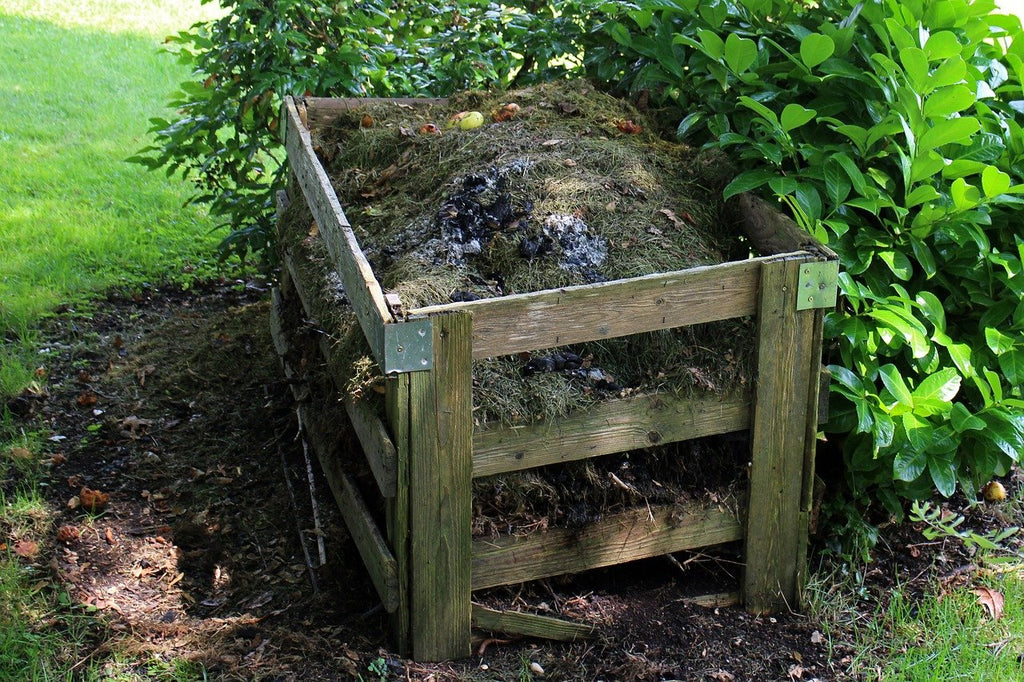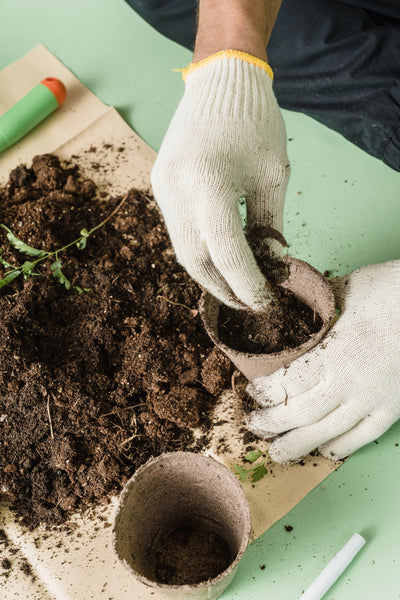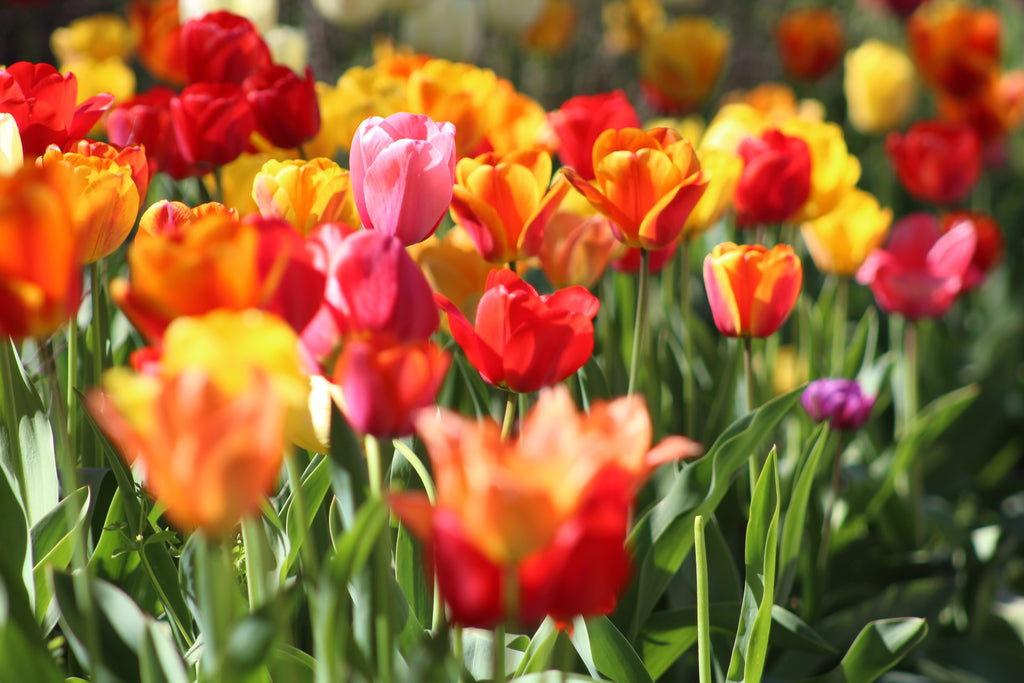
Flowers are almost always great additions to a compost pile because they act as both green and brown waste, the two types of organic materials you need to balance to get nutritious compost. However, you need to remove certain parts and other items that should not go into that compost pile.
A fresh bouquet in a vase brightens up a room, and a garden full of blossoming trees and shrubs turns a plain yard into a fragrant oasis. At least, they do when the garden flowers are alive. Once the blossoms fade, you have a mess on your hands.
You could toss those withered bouquets and deadheaded blooms into the garbage, but if you have a compost pile or a kitchen compost bin, you can put those flowers to further use. Flowers are a terrific addition to compost piles, for the most part. All you have to do is watch out for and remove specific types of flowers and other floral waste that shouldn't go in the pile – but the rest can go right into the compost bin.
Can You Put Flowers in Compost?

Are flowers compostable? You bet they are. Compost relies on a mix of organic materials known as brown and green waste. Brown waste is essentially dead waste; dead leaves, newspaper, sawdust, dried flowers, and so on are considered brown compost material. Dry, brown materials provide carbon for the compost. Green material provides nitrogen and is considered "wet" because it's fresher and not dried out.
Food, coffee grounds, grass clippings, and freshly trimmed plant parts that aren't dried out are all considered green compost material. Flowers can be a green waste when fresh, brown waste when totally dried out, and both brown and green waste when they're not entirely dead.
How to Make Compost From Flowers

Flower parts need very little preparation before being added to the compost pile. However, don't grab them out of the vase and stuff them randomly into the compost bin. You'll need to go through some quick steps before composting flowers.
Get Your Flowers First

No kidding, right? Get your flowers first before adding them to a composting pile. But that's actually a crucial step in the composting process because you need to know how many flowers (and other plant parts) you will end up with when you've gathered everything that you're pruning off or cleaning up.
Are you cutting off dead parts, like withered flower heads, or healthy parts that need to be trimmed away, like live, healthy flowers on a fruit tree that you're thinning out for better fruit production? Remember that flowers can be brown or green compost material (or both), and you have to know how much of each type you're adding to the compost bin.
Cut Them

Once you have the flowers, cut them into smaller pieces. It's up to you how small you want to make them; at the very least, cut up stems, tear or cut large petals in half or thirds, and cut large leaves in half or thirds. The smaller the pieces that you place in the compost pile, the faster they'll decompose.
Important: Keep the dead and not-dead materials separate.
If the flowers in question have bulbs, separate the bulbs and see if you can chop them into tiny pieces. Bulbs and similar plant bases, such as corms, take a very long time to decompose in compost. If you want to add those, you'll need to cut them into very small pieces.
If you can't or don't want to cut it up, then throwing the bulb out is the only option for disposal. If the bulb appears healthy, though, you could try replanting it next season and seeing if you can get some new flowers out of it.
Organize Them in the Composting Heap

Organize flowers in a compost heap in the same manner that you'd use for other compostable materials. Place a layer of brown compost material at the bottom, then a layer of green – make all these layers thin – and then repeat the two layers two to three more times, so you have about three to four of these double brown/green layers. Add one more layer of brown waste on top.
Water the Layers

Water each layer as you place it in the compost bin to wet it. So you'll put down a layer of brown waste, then water it, then another layer of green waste, then water it, and so on.
Remember to Turn

Turning compost, or aerating the compost, helps prevent compaction, moisture pooling, and overheating. If you're using a compost pile, take a shovel and start turning over the pile of compost. Literally, just dig in and start turning over what you bring up with the shovel. Do that all over the pile every few days. Do this at least once a week.
If you have a bin with a tumbler instead, turn the tumbler every three or four days, or about twice a week. The compost should be ready for use in about three months, although it may take less time in summer and more time in winter. Heat affects how well the bacteria in the compost pile work.
Incorporate It in the Soil

When you're ready to use your compost, place a layer of finished compost that's about 3 to 4 inches thick on the soil you want to amend, and mix the compost and soil to a depth of about 6 inches in the soil (in other words, mix 3 to 4 inches of compost with 6 inches of soil). Use this compost in flower beds, vegetable gardens, and any other planting you want to do.
Can You Compost Dead Flowers?

In general, yes, you can compost dead flowers. If they're totally withered and dried, that's a brown waste. If they are part dead and part alive, you've got a combination of green/brown waste.
Can You Compost Dry Leaves?

As long as they aren't infected, covered with mold, or infested with bugs, dry leaves are excellent sources of brown waste for compost. Rip them up into smaller pieces to make the decomposition process go faster, or use your lawnmower's mulching function to shred them and redistribute them in your lawn to act as both mulch and compost for grass.
Can You Put Dead Plants in Compost?

As with dead flowers and dead leaves, if the plant was healthy before it died and didn't have any other questionable issues, then yes, cut those things up and add them to the compost bin or pile.
Types of Flowers or Flower Parts NOT to Add to Compost

You have to evaluate flowers first to ensure they're suitable for the pile. That sounds strange at first, but it makes sense when you know what to look for.
Look for diseased or infested plant parts as well as those that are poisonous to pets. The diseased and infested plant parts are self-explanatory – you risk spreading the pathogens and pests if you add them to your compost. Drop diseased flowers and other diseased plants in the trash instead.
As for poisonous plants, just having a toxic status (such as with oleander) does not automatically exclude a plant from being compost. In many cases, the decomposition process in the compost helps remove the toxins or prevent them from transferring into other plants. However, this isn't guaranteed, and you should check with a local gardening center or university agricultural extension about specific plants and flowers.
Also, if you have pets that like to crawl over the compost pile or even eat the compost, then you want to keep anything that could be toxic to the pets out of that pile.
You also want to avoid placing thorny stems in compost bins and piles. Not only do they take a long time to decompose, but they can poke you when you try to use the compost if you aren't wearing very thick gloves. Better to just keep them out.
Finally, commercial flowers treated with pesticides and herbicides are questionable. You don't want those transferring into the compost. It can be challenging to tell which flowers were treated, of course. Still, it's safe to assume that fresh flowers you got from a conventional florist that wasn't labeled as organic or as using eco-friendly pesticides are likely contaminated.
Can You Compost Tulips?

Tulips are compostable with some preparation. The flower petals and stem should be no problem; just cut them into smaller pieces. If these are not cut flowers but a dug-up plant instead, sever the stem from the bulb and either cut the bulb into tiny pieces (tiny!) or throw the bulb away. Whole bulbs take too long to decompose and can even start growing a new plant in the compost instead.
Can You Compost Lilies?

Lilies are like tulips in that you can compost the flower petals and stems (cutting them up, and so on), but the bulbs present a problem. Really, for healthy lily and tulip bulbs, you might want to look at keeping them cold until you're ready to plant again and then trying to get new lilies and tulips instead of destroying the flower bulbs.
If you have a cat that likes to chomp on or lick dirt, though, avoid composting lilies in the daylily and true-lily groups. Those are toxic to cats.
Conclusion
Can flowers be composted? They can, and if you really want to make it easy on yourself, a kitchen food recycler unit like Lomi can help you with food recycling in a relatively short amount of time. No worries about trudging over to an outdoor compost heap in the yard with all your trimmed flowers; instead, place them right in the bin along with food scraps and other green kitchen waste. With a steady supply of nutrient-rich Lomi Earth, you can create a beautiful, healthy garden – along with even more fresh flowers.

